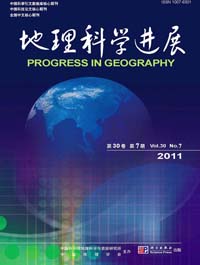Original Articles
ZENG Hongwei, LI Lijuan, ZHANG Yongxuan, LIU Yumei
This paper studies spatial interpolation of precipitation at a national scale, the precipitation data comes from 2203 meteorological stations of China in 2009. The research content includes three parts as follows. At first, this paper divided the stations into different groups by stochastic methods, including 90%, 80%, 70%, 60%, 50%, 40%, 30%, 20%, 10%, 5% and 4% sampling rate groups, and analyzed the impact of sampling data on interpolation result by inverse distances weighting methods. Secondly, the stations with 80%, 50% and 20% of sampling rates were treated by the same sampling interval method, which extracted sampling data with gaps equal 1 or 4 according to ID serial number. By comparing interpolation result with the result by stochastic method in the same sampling rate, this paper analyzed the relationship between sampling methods of data and the result of interpolation. Finally, the paper analyzed the differences of interpolation result by IDW, Kriging and Co-Kriging in the same sampling rate groups. We can draw some conclusions as follows: (1) Using IDW methods, MAE and RMSE decreased gradually as the amount of sampling data increased, while the correlation coefficient decreased at the same time. The increase from 50% to 90% was slow with slight fluctuations, and that from 20% to 50% became obvious. Especially, when the sampling fraction <20%, MAE and RMSE were increased significantly, and the correlation coefficient was significantly reduced. (2) We found that the relationship between uniform of stations distribution and precipitation interpolation results was complex after cross-validation, and sometimes it did not have better interpolation result under more uniform distribution of stations. (3) With not only the random sampling data, but also the same interval sampling data, MAE and RMSE using IDW methods were large than Kriging interpolation method, while R2 was smaller. It is suggested that Kriging interpolation was better than IDW method in this paper. Taking 50% and 20% sampling rate groups as an example, using IDW and Kriging spatial interpolation methods, we obtained the precipitation spatial distribution of China, and the interpolation results were consistent with the actual situation.
